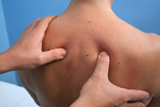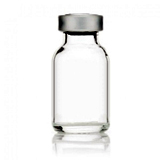Nutrition and diet
Collective bio-energetics: food detoxification — I
Abstract
Utilising a form of Applied Kinesiology by muscle-testing, the study focused on three food toxicity factors — Pesticide, Food additives, and Food colouring matter (PAC) — as detected for eight types of foods available at a supermarket in northern California. The market is located in the vicinity of a fitness centre for which an Integral Bio-Energetic Field (IBEF) had previously been established. Each of the PAC factors was later on selectively induced into the IBEF centre, thereby expanding its bio-energetic potential for detoxification. Subsequent post-testing indicated that exposure of the food samples to IBEF led to their detoxification involving the three PAC factors.
Introduction
The investigation may be considered being sequential to a prior study regarding the bio-energetic detection and detoxification of air-pollution, as detailed in the April 2016 issue of NAMAH (1). The current investigation represents the first of two studies concerning food toxicity — its initial detection, and elimination after exposure of the food samples to an Integral Bio-Energetic Field, known as IBEF. The detoxification is believed to be due to the vibration emanating from the energy field. The IBEF had earlier been created (induced) and verified as existing at a local fitness centre (2). Basic methods used for creating and activating IBEF are summarised below in the Appendix.
Methodology
The investigation covers several areas of interest, as follows: 1. Baseline indicators showing three toxicity factors within food samples in trace amounts; 2. Selective induction of these factors into an IBEF centre; and 3. the resulting detoxification.
Baseline measures
At the outset, baseline measures revealed trace amounts of toxicity contained in eight types of foods available at a local supermarket, located in the vicinity of the initial IBEF centre. The three toxicity factors were: Pesticide, Food additives, and Food colouring matter (PAC). The inorganic food samples included banana, onion, tomato, bell pepper, potato, ginger-root, mushroom as well as mixed frozen vegetables (carrots, peas, beans) for which trace food colouring was detected.
The PAC factors were detected by applying a form of Applied Kinesiology, referred to as Pre-Determined Muscle Testing (PDM), (3). The testing involved several steps: 1) the recipient continually holding the food sample; and 2) also, holding, successively, three water-filled vials, each of which had been electronically sensitized for a different PAC factor; 3) the investigator PDM-testing the recipient — pressing on his/her (right or left) down-turned wrist, arm extended, while he/she gently resists the pressure. A relatively ‘strong’ muscle indicates a non-allergic condition; whereas, a “weak” muscle indicates an allergic reaction — to a specified PAC toxicity factor.
It should be emphasised that the baseline samples had been obtained from a supermarket nearby the IBEF centre. According to prior studies, IBEF effects are ordinarily limited to a centre’s immediate vicinity. However, a special procedure can be applied so as to extend IBEF effects within 5-mile radius (4).
Selective induction
Initial baseline data were obtained prior to the application of a selective induction procedure.
At this point, clarification is needed with regard to two types of bio-energetic inductions.
The first of these is overall induction. It involves a combination of seven core elements to produce a complex vial for creating IBEF. The second type is selective induction. It serves to expand the overall scope of IBEF, in order to provide specific kinds of healing, allergy clearance, and detoxification.
Induction of PAC toxicity
After the baseline testing, the three PAC toxicity factors were selectively induced into the IBEF centre, as verified with pre-post PDM testing. Stated briefly, the procedure consists of three steps. First, I ask the Divine Mother for guidance to enable the procedure. Next, I hold the complex vial which was used to create IBEF together, successively, with each of the three PAC vials. Then, I visualise myself using gentle acupressure, as follows: with the index fingers on both sides between the vertebrae, press once down the 12 thoracic and 5 lumbar vertebrae.
By performing this step for each of the PAC vials, the three PAC substances will have been induced into the IBEF centre.
Each factor was tested twice: before the induction, showing that it was not present within the IBEF centre; and again after the induction, verifying its presence within the centre.
The testing was done first by the investigator; next, as ‘blind-testing’, by an assistant, Allison, a staff-member at the fitness centre where IBEF had initially been established.
Detoxification effect
Following the selective induction, PDM was repeated as post-testing for each of the eight food samples, for which earlier baseline testing had shown trace toxicity.
The post-testing indicated that each of the three PAC toxicity factors had been eliminated, were no longer detectable. Presumably, after the selective induction, IBEF dynamics served to synthesize and integrate the PAC factors, resulting in their detoxification.
Conclusion
The above findings support the study’s central hypothesis: namely, that the IBEF vibrations led to the detoxification of PAC. From a viewpoint of the Integral Yoga, however, a higher form of energy may have emanated and brought about the result, which is beyond ordinary scientific explanation. From this perspective, the detoxification effects are believed to be within the realm of the Divine Mother’s Grace, brought about with her compassion and guidance.
References
1. Seckel JP. Collective bio-energetic detoxification. NAMAH, April 2016; 24(1): 46-8.
2. Seckel JP. Creating a healing atmosphere within centres and for a spiritual community: an investigative study — II, NAMAH, July 2015; 23(2): 26-34.
3. Nambudripad DS. Freedom from Environmental Sensitivities. Buena Park, CA: Delta Publishing Company; 2005, pp. 150-3.
4. Seckel JP. Creating a healing atmosphere within centres and for a spiritual community: an investigative study – III, NAMAH, October 2015; 23(3): 38.
5. Allergies, Lifestyle & Health [Online] Available from: http://www.alhvials.com (Accessed 11th July, 2016).
6. Seckel JP. Creating a healing atmosphere within centres and for a spiritual community: an investigative study — I, NAMAH, April 2015; 23(1): 25-6.
7. Seckel JP. Creating a healing atmosphere within centres and for a spiritual community: an investigative study — II, NAMAH, July 2015; 23(2): 29-30.
Appendix
IBEF dynamics
In order to create, sustain, and verify IBEF at a centre, several preparatory phases are required, as summarised below. More detailed aspects are described in prior NAMAH articles (1), (2), (4).
1. Divine guidance
In the spirit of Integral Yoga, we ask the Divine Mother for guidance and Grace toward creating the IBEF healing atmosphere. As a devotee of the Integral Yoga of Sri Aurobindo and the Mother, the practitioner would be an aspirant towards a higher consciousness and familiar with and dedicated to their teachings.
2. PDM and QRT testing
To create IBEF, detect its presence and verify the effects, Pre-Determined Muscle Testing (PDM), as explained above, is mainly applied.
In addition, a form of self muscle-testing, referred to as Question-Response Testing, (QRT), may be utilised. It involves: a) asking a specific health-related question; b) receiving a relative muscle-strength answer in terms of ‘Yes’ (strong) or ‘No’ (weak). For a frequently used QRT: press tip of middle-finger upon the index finger’s upper finger-nail, thereby, determining relative muscle strength.
3. NAET: Allergy elimination
Applying principles of oriental medicine, NAET (Nambudripad Allergy Elimination Technique) is not only a method for detecting and clearing allergies. Its scope is broader than the medical definition of allergies — as it is based on measures of reactivity to bio-incompatible substances and related types of energetic imbalance. Thus, its PDM-testing includes reactivity to pathogens, toxic elements, body components, as well as allergic response to another person.
The basic NAET procedure involves a series of PDM muscle tests. Throughout these steps, the patient holds a water-filled vial which has been electronically sensitized for a given substance, or potential allergen. Using PDM, the practitioner determines whether or not the patient is allergic to the designated vial substance. The subsequent treatment, mainly, applies configurations of acupressure points along the patient’s thoracic and lumbar vertebrae.
Major aspects of the NAET procedure are described in a prior NAMAH article (6). It is noteworthy that peer-reviewed, experimental studies have consistently demonstrated NAET’s effectiveness, as detailed in NAET research journals (3).
4. IBEF vial
As stated above, IBEF is generated by utilising a complex water-filled vial — produced by subjecting the water molecules to vibrations of electrical impulses (VEI) with a special apparatus. The VEI thereby rearranges the electrical pattern of the molecules to be in synergy with the bio-energetic pattern of a given substance or allergen.
It is of interest that PDM testing would have shown the same result if, instead of holding the vial, the patient had held the actual allergen/substance.
A leading organisation for producing the bio-energetic vials is Allergies, Lifestyle, and Health Company (ALH) (5). The investigator requested ALH to generate a multi-dimensional vial, for the creation of IBEF. The resulting vial consists of seven core-elements, which he initially identified by means of QRT-testing.
Despite the in-depth, wide scope covered by the core elements, an additional factor(s) is sometimes needed. It would be added by means of the IBEF selective induction procedure.
For example, the current study required the addition of the three toxic PAC elements. This may have been necessary because the food samples, although overall non-toxic, contained trace amounts of PAC toxicity.
PDM-testing of the IBEF vial would reveal reactivity (weak) only within the IBEF centre, but not outside or nearby (strong). This finding can be said to verify the presence of IBEF’s healing atmosphere within the centre.
However, it has been found that IBEF’s healing field can be extended beyond its centre. For this purpose, the practitioner simply states ‘Extend IBEF’ as an affirmation.
Thereafter, the extension can be detected by PDM testing with the IBEF-vial at some distance from the centre. According to QRT testing, the extension can exist within the limit of a 5-mile radius. Also, the extension can be expected to continue for two days.
The extension effect may be verified as follows:
1. Move away (at least one mile) from the IBEF centre. Then, while holding the IBEF vial, PDM-testing will indicate (as baseline measure) that IBEF does not exist (strong) in this location.
2. Still holding the IBEF-vial, state ‘Extend IBEF’. The second PDM-testing will now indicates (weak/ reactive), confirming that IBEF exists within the distant location.
5. Induction of IBEF Vial
Following development of the IBEF vial, the next step was to overall induce its vibration into a centre in order to establish the IBEF healing atmosphere. As mentioned earlier, the procedure for the (overall) induction was detailed in a prior NAMAH article (7).
Initially, IBEF was overall-induced for a fitness centre, located in northern California (NC). Later on, it was also induced for four other NC centres, including an Integral Yoga Ashram. Moreover, IBEF was created throughout the Integral Yoga community of Auroville in southern India. The respective IBEF activations were verified by means of two research designs. One of these involved pre-post PDM testing, using the above core vial, to verify IBEF existence at the centres and Auroville.
The resulting PDM tests for the centres and Auroville showed that a) before the induction, there was no reactivity; b) after the induction, consistent reactivity, confirming IBEF existence.
The second research design employed pre-and post-testing of 53 case-study subjects — i.e., before and after their IBEF exposure. PDM-testing prior to exposure indicated that every subject needed at least one healing for an allergy or related disorder (ADR). After their IBEF exposure, PDM testing revealed that ADR’s had been eliminated for all subjects, i.e., no additional healings were needed.
Joachim P. Seckel, M.A., Acupr., NAET is a researcher based in Albany, California.
Share with us (Comments,contributions,opinions)
When reproducing this feature, please credit NAMAH,and give the byline. Please send us cuttings.






